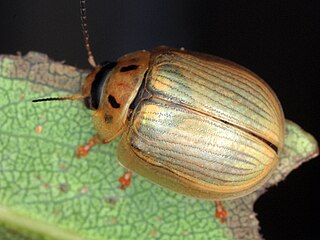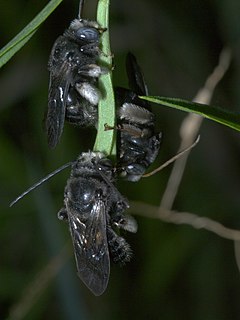
The bimaculated lark breeds in warm temperate countries eastwards from Turkey into central Asia. It is the eastern counterpart of its relative, the calandra lark.
Tridecane is any alkane hydrocarbon with the chemical formula C
13H
28, or to a mixture of them. There are 802 constitutional isomers with that formula. In the IUPAC nomenclature, the name refers exclusively to one isomer, the straight-chain CH3(CH2)11CH3, also called normal or n-tridecane; the other isomers are named as derivatives of lighter hydrocarbons, as in 2,2,4,4-tetramethyl-3-t-butyl-pentane.

Elaphe bimaculata, the twin-spotted ratsnake or Chinese cornsnake, is a small ratsnake (60–80 cm) found in China. It occurs as both blotched and striped phase, with the blotched type being the more common or "typical" phase. Some specimens even exhibit a pattern of half blotched, half striped where the anterior half is usually blotched and the posterior half striped. They are found in many habitats ranging from the edge of forest to cultivated areas and seem to like cooler temperatures and higher humidity. This secretive snake prefers smaller food items such as young to half grown mice. E. bimaculata has been known to breed at different times of the year, usually with 3-10 eggs being laid in late spring; eggs require 35–48 days of incubation. A period of 2–3 months hibernation is typical. Females are known to grow larger and heavier than males.

The white-rumped robin is a species of bird in the family Petroicidae. It is found in New Guinea. Its natural habitats are subtropical or tropical moist lowland forests and subtropical or tropical moist montane forests.
Venericardia is a widely distributed genus of marine bivalve molluscs, in the family Carditidae.

Lomographa bimaculata, the white-pinion spotted, is a species of geometer moth. It belongs to the large geometer moth subfamily Ennominae, and therein to the tribe Baptini. It is – under its junior synonym – the type species of its genus Lomographa. It is also the type species of Bapta, a junior objective synonym of Lomographa and the namesake of the Baptini. The species was first described by Johan Christian Fabricius ion 1775.

Opharus bimaculata is a moth of the family Erebidae. It was described by Hermann Dewitz in 1877. It is found in Puerto Rico, Guatemala, Costa Rica, Honduras, Venezuela and Brazil.

Sybra is a genus of beetles in the family Cerambycidae, containing the following species:

Sybra umbratica is a species of beetle in the family Cerambycidae. It was described by Pascoe in 1865.
Sybra bioculata is a species of beetle in the family Cerambycidae. It was described by Pic in 1925. It contains four subspecies: Sybra bioculata bioculata, Sybra bioculata quadrinotata, Sybra bioculata sikkimana, and Sybra bioculata tigrina.

Sybra ordinata is a species of beetle in the family Cerambycidae. It was described by Bates in 1873.
Sybra pascoei is a species of beetle in the family Cerambycidae. It was described by Lameere in 1893.

Glycymeris bimaculata is a marine bivalve mollusc in the family Glycymerididae.

Phaleria bimaculata is a species of darkling beetles belonging to the family Tenebrionidae.

Paropsisterna bimaculata is a beetle commonly called a leaf beetle in the subfamily Chrysomelinae. This insect is common in Tasmania and can be a pest in the forestry industry. Paropsisterna bimaculata will develop a red color just before their winter hibernation. When they emerge the red slowly disappears into a pale green colouring with faint gold tessellation. This takes about a month with the males generally slightly advanced. Recently this beetle has been noticed in Victoria.
Uraecha bimaculata is a species of beetle in the family Cerambycidae. It was described by James Thomson in 1864.

Diplecogaster bimaculata, the two-spotted clingfish, is a species of fish in the family Gobiesocidae found in Black Sea, Mediterranean Sea and Atlantic Ocean where it is found on rocks and among seagrass or shell beds.

Melissodes bimaculata, the two-spotted longhorn, is a species of long-horned bee in the family Apidae.

Thelia bimaculata, the locust treehopper, is a species of treehopper in the family Membracidae.

Neottiura bimaculata is a species of cobweb spider in the family Theridiidae. It is found in North America, Europe, Turkey, Caucasus, Russia (Sibiria), Central Asia, China, and Japan.
















